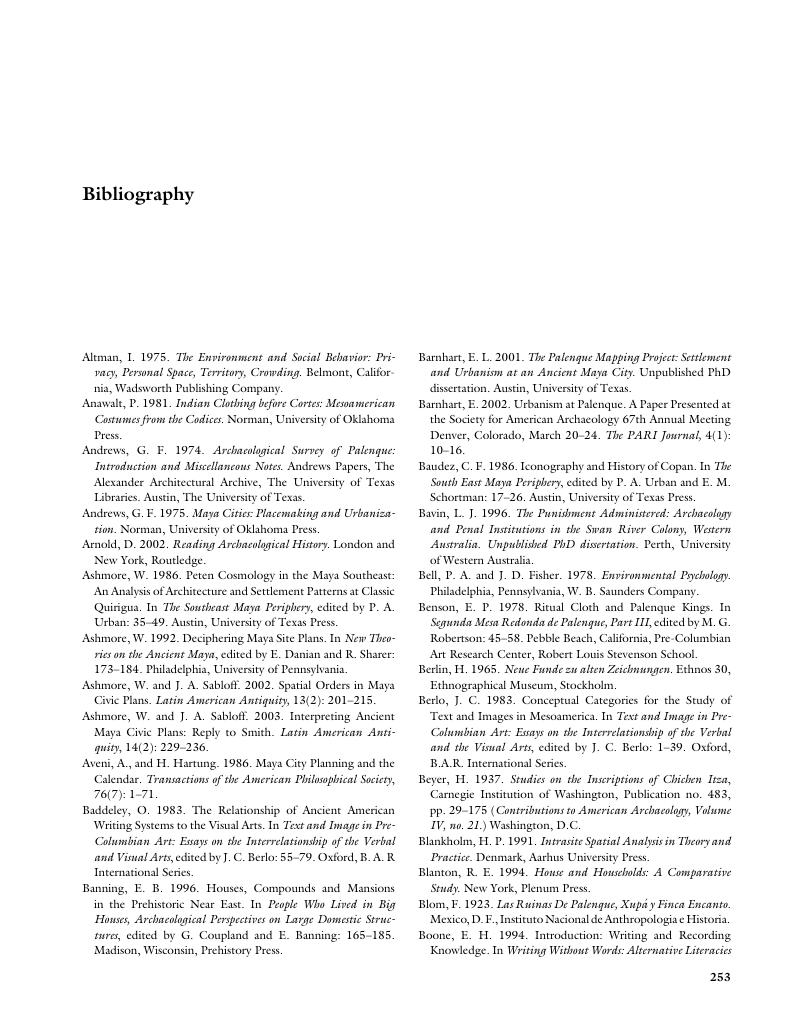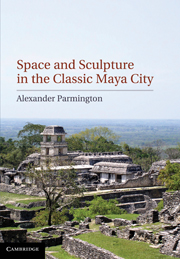Book contents
- Frontmatter
- Contents
- List of illustrations
- List of tables
- Summary
- Acknowledgements
- Introduction
- 1 Defining the Maya built environment
- 2 Investigative considerations and methodology
- 3 Access analysis of the Palenque Cross Group and its sculpture
- 4 Architectural and sculptural programs of the Palenque Palace Group
- 5 Access analysis of the architectural and sculptural programs of the Palenque Palace Group
- 6 Access analysis of Maya art and architecture: Summary and conclusions
- Appendixes 1–7
- Bibliography
- Index
- References
Bibliography
Published online by Cambridge University Press: 05 August 2011
- Frontmatter
- Contents
- List of illustrations
- List of tables
- Summary
- Acknowledgements
- Introduction
- 1 Defining the Maya built environment
- 2 Investigative considerations and methodology
- 3 Access analysis of the Palenque Cross Group and its sculpture
- 4 Architectural and sculptural programs of the Palenque Palace Group
- 5 Access analysis of the architectural and sculptural programs of the Palenque Palace Group
- 6 Access analysis of Maya art and architecture: Summary and conclusions
- Appendixes 1–7
- Bibliography
- Index
- References
Summary

- Type
- Chapter
- Information
- Space and Sculpture in the Classic Maya City , pp. 253 - 258Publisher: Cambridge University PressPrint publication year: 2011



